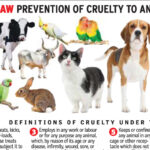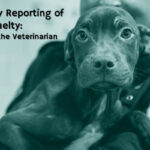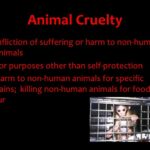In a world increasingly cognizant of animal welfare, the question arises: Is it cruel to kill animals for food? This query not only probes at the ethical core of human dietary choices but also challenges societal conventions that have endured for centuries. This discussion necessitates a thorough examination of ethics, cultural significance, environmental ramifications, and the evolving landscape of food production in the twenty-first century.
The Ethical Paradigm
To evaluate the ethics of killing animals for food, one must first understand the philosophical frameworks that dissect moral obligations towards sentient beings. At the forefront is utilitarianism, a doctrine advocating for actions that maximize overall happiness. From this perspective, the suffering inflicted upon animals destined for consumption often outweighs the benefits derived from their death for human sustenance. A contrasting view, known as speciesism, posits that humans hold a superior moral standing compared to non-human animals, thereby justifying the exploitation of animals for food. This viewpoint, however, has been vehemently contested by ethical philosophers who argue for equal consideration of interests, regardless of species.
Moreover, deep ecology emphasizes the intrinsic value of all living beings, promoting a holistic understanding of ecosystems. Advocates for this movement posit that the killing of animals disrupts the natural balance, leading to broader implications for biodiversity and ecological interrelationships. This perspective prompts a reevaluation of human dominion over nature and questions the legitimacy of prioritizing human needs over those of other species.
The Cultural Context
Culture plays an integral role in shaping attitudes towards animal consumption. Many societies view certain animals as food sources, interpreting this practice as an indelible aspect of their culinary heritage. Traditions such as the annual festivals celebrating livestock harvesting create a dichotomy where the killing of animals is ritualized, thereby mitigating perceived cruelty through social context. Such practices often evoke a sense of communal bonding and identity. However, this ingrained cultural acceptance can hinder critical assessments of animal welfare, leading to moral dissonance in consumers’ attitudes.
Conversely, several cultures embrace vegetarianism or veganism as ethical alternatives, prioritizing compassion and kindness over traditional dietary choices. In these contexts, the act of consuming animals is seen as an affront to moral sensibilities and an act of violence against fellow sentient beings. The juxtaposition of conflicting cultural norms reveals the complexity surrounding dietary choices and underscores the necessity for open dialogue regarding ethical implications.
The Environmental Dimension
The environmental consequences of killing animals for food cannot be overlooked. Industrial farming practices contribute significantly to greenhouse gas emissions, deforestation, and biodiversity loss. The rearing of livestock for consumption necessitates vast tracts of land, disproportionately impacting ecosystems and depleting natural resources. In pursuing the profitability of animal agriculture, deforestation rates surge, leading to the obliteration of habitats critical for the survival of myriad species.
Thus, the environmental argument against killing animals for food gains momentum in light of growing concerns about climate change. Sustainable dietary practices, including plant-based diets, are increasingly cited as viable solutions to curb ecological degradation. The rise of alternative protein sources, such as lab-grown meat and legumes, heralds a paradigm shift in addressing food production without compromising animal welfare or environmental integrity.
Contemporary Developments
Advancements in technology play a pivotal role in shaping the discourse surrounding animal consumption. The development of cultured meat, derived from animal cells without necessitating their death, offers an innovative alternative that alleviates ethical concerns while providing animal protein. This burgeoning industry challenges conventional notions of food production and presents a fascinating juncture where ethics, science, and gastronomy intersect.
Fueled by public demand for compassionate and sustainable food sources, these innovations may potentially alter consumers’ perceptions of animal consumption. As lab-grown options gain traction, the question remains whether society can wholly embrace these alternatives without grappling with deeply rooted culinary traditions.
Conclusion and Forward-Thinking Perspectives
As the conversation surrounding the ethics of killing animals for food continues to evolve, it becomes increasingly clear that there is no singular answer to this complex query. Each perspective has inherent validity, yet the moral imperative to reconsider these practices remains. The tensions between tradition, cultural beliefs, and the ethical treatment of animals are vividly palpable, demanding nuanced discussions that bridge seemingly insurmountable divides.
Ultimately, the aspiration for a more humane society necessitates an exploration of diverse dietary practices, engaging in thoughtful discourse, and challenging established norms. Our choices today carve the path for future generations, compelling us to question not only the ethics of killing animals but the broader ramifications our dietary habits impose on the planet and its inhabitants. In this regard, the journey towards ethical eating hinges upon our collective willingness to examine our choices critically and embrace the possibilities of a future that honors all sentient beings.





